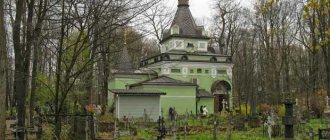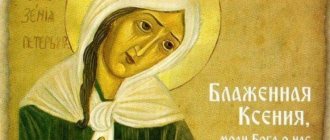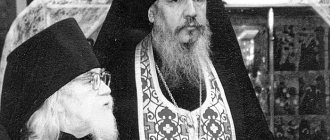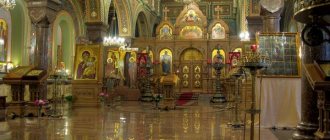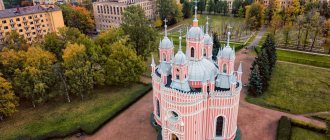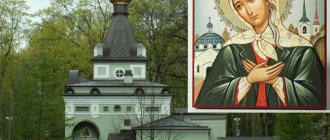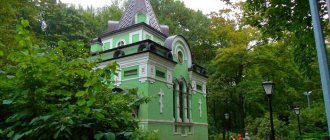Mir
Russia St. Petersburg Temple of Blessed Xenia of Petersburg (St. Petersburg) Map is loading…
{"format":"leaflet","minzoom":false,"maxzoom":false,"limit":50,"offset":0,"link":"all","sort":[""], "order":[],"headers":"show","mainlabel":"","intro":"","outro":"","searchlabel":"\u2026 \u0441\u043b\u0435\ u0434\u0443\u044e\u0449\u0438\u0435 \u0440\u0435\u0437\u0443\u043b\u044c\u0442\u0430\u0442\u044b","default":"","import-annotation":false,"width ":"auto","height":"350px","centre":{"text":"","title":"""link":"""lat":59.9633119399999969800774124450981616973876953125,"lon": 30.299328890000001734961188049055635929107666015625,"icon":""},"title":"","label":"","icon":"","lines":[],"polygons":[],"circles":[ ],"rectangles":[],"copycoords":false,"static":false,"zoom":8,"defzoom":14,"layers":["OpenStreetMap"],"image layers":[] ,"overlays":[],"resizable":false,"fullscreen":true,"scrollwheelzoom":true,"cluster":false,"clustermaxzoom":9,"clusterzoomonclick":true,"clustermaxradius":80, "clusterspiderfy":true,"geojson":"","clicktarget":"","showtitle":true,"hidenamespace":false,"template":"","userparam":"","activeicon": "","pagelabel":false,"ajaxcoordproperty":"","ajaxquery":"","locations":[{"text":"\u003Cb\u003E\u003Ca href=\"/palomnik/%D0% A5%D1%80%D0%B0%D0%BC_%D0%B1%D0%BB%D0%B0%D0%B6%D0%B5%D0%BD%D0%BD%D0%BE%D0%B9_% D0%9A%D1%81%D0%B5%D0%BD%D0%B8%D0%B8_%D0%9F%D0%B5%D1%82%D0%B5%D1%80%D0%B1%D1% 83%D1%80%D0%B3%D1%81%D0%BA%D0%BE%D0%B9_(%D0%A1%D0%B0%D0%BD%D0%BA%D1%82-%D0% 9F%D0%B5%D1%82%D0%B5%D1%80%D0%B1%D1%83%D1%80%D0%B3)\» title=\»\u0425\u0440\u0430\u043c \u0431 \u043b\u0430\u0436\u0435\u043d\u043d\u043e\u0439 \u041a\u0441\u0435\u043d\u0438\u0438 \u041f\u0435\u0442\u0435\u0440\u0431\ u0443\u0440\u0433\u0441\u043a \u043e\u0439 (\u0421\u0430\u043d\u043a\u0442-\u041f\u0435\u0442\u0435\u0440\u0431\u0443\u0440\u0433)\»\u003E\u0425\u0440\u04 30\u043c\u0431\ u043b\u0430\u0436\u0435\u043d\u043d\u043e\u0439 \u041a\u0441\u0435\u043d\u0438\u0438 \u041f\u0435\u0442\u0435\u0440\u0431\u0 443\u0440\u0433\u0441\u043a\ u043e\u0439 (\u0421\u0430\u043d\u043a\u0442-\u041f\u0435\u0442\u0435\u0440\u0431\u0443\u0440\u0433)\u003C/a\u003E\u003C/b\u00 3E\u003Chr /\ u003E\u003Ca href=\»/palomnik/%D0%A1%D0%B2%D0%BE%D0%B9%D1%81%D1%82%D0%B2%D0%BE:%D0%90%D0% BD%D0%BD%D0%BE%D1%82%D0%B0%D1%86%D0%B8%D1%8F\" title=\"\u0421\u0432\u043e\u0439\u0441\u0442\u0432\ u043e:\u0410\u043d\u043d\u043e\u0442\u0430\u0446\u0438\u044f\u003E\u0410\u043d\u043d\u043e\u0442\u0430\u0446\u0438\u044f\u 003C/a\u003E: " '\u0426\u0435\u0301\u0440\u043a\u043e\u0432\u044c \u0432\u043e \u0438\u0301\u043c\u044f \u0421\u0432\u044f\u0442\u043e\u0301 \u0439 \u0411\u043b\u0430\ u0436\u0435\u0301\u043d\u043d\u043e\u0439 \u041a\u0441\u0435\u0301\u043d\u0438\u0438 \u041f\u0435\u0442\u0435\u0440\u0431\u0 443\u0301\u0440\u0433\u0441\ u043a\u043e\u0439"' \u2014 \u043f\u0440\u0430\u0432\u043e\u0441\u043b\u0430\u0432\u043d\u044b\u0439 \u0445\u0440\u0430\u043c \u043d\u0430 \u041b\u0430\ u0445\u0442\u0438\u043d\u0441\u043a\u043e\u0439 \u0443\u043b\u0438\u0446\u0435 \u0432 \u0421\u0430\u043d\u043a\u0442-\u041f\ u0435\u0442\u0435\u0440\u0431 \u0443\u0440\u0433\u0435. \u0425\u0440\u0430\u043c \u043f\u043e\u0441\u0442\u0440\u043e\u0435\u043d \u043d\u0430 \u043c\u0435\u0441\u0442\u0435, \u04 33\u0434\u0435\u0441\u0442\ u043e\u044f\u043b \u0434\u043e\u043c, \u0432 \u043a\u043e\u0442\u043e\u0440\u043e\u043c \u0436\u0438\u043b\u0430 \u0431\u043 b\u0430\u0436\u0435\u043d\u043d \u0430\u044f \u041a\u0441\u0435\u043d\u0438\u044f \u041f\u0435\u0442\u0435\u0440\u0431\u0443\u0440\u0433\u0441\u043a\u0430\ u044f\u0441\u043e\u0441\u0432 \u043e\u0438\u043c \u043c\u0443\u0436\u0435\u043c.","title":"\u0425\u0440\u0430\u043c \u0431\u043b\u0430\u0436\u0435\u043d\u043d \u043e\u0439 \u041a\u0441\u0435\u043d\u0438\u0438 \u041f\u0435\u0442\u0435\u0440\u0431\u0443\u0440\u0433\u0441\u043a\u043e\u0439 (\u0421\ u0430\u043d\u043a\u0442- \u041f\u0435\u0442\u0435\u0440\u0431\u0443\u0440\u0433)","link":"","lat":59.9633119399999969800774124450981616973876953125,"lon":30. 299328890000001734961188049055635929107666015625,"icon":""}]" imageLayers":[]}
59.96344; 30.299079
Russia, St. Petersburg, Lakhtinskaya street, 17
Saint Petersburg
Russia
Telephone:
+7 (812) 337-27-75
Email:
Church in the name of St. Blessed Xenia of St. Petersburg
- Orthodox church on Lakhtinskaya Street in St. Petersburg. The temple was built on the site where the house stood in which Blessed Ksenia of Petersburg lived with her husband.
History[edit]
They decided to build a temple on Lakhtinskaya Street in the early 2000s. The initiator was the society of disabled people of the Petrograd region. With the blessing of the ruling bishop, the parish was headed by the full-time cleric of St. Andrew's Cathedral on Vasilyevsky Island, Archpriest Konstantin Gultyaev. The construction of the temple from its foundation to its consecration was carried out directly through the efforts of Father Konstantin. The parish was supported by caring people who were ready to donate their money to a charitable cause. Special thanks must be expressed to the Chairman of the Legislative Assembly of St. Petersburg, Vyacheslav Serafimovich Makarov, who shows great attention to the life of the temple, and the founder of the group and foundation “Creating the World,” philanthropist Vyacheslav Adamovich Zarenkov. They showed themselves to be real Russian ascetics. Without their efforts, the church might have turned into a long-term construction project.
According to the project of the architectural studio of Gennady Fomichev, the two-story Church of St. Blessed Xenia of St. Petersburg is the only one in the city.
It was supposed to be built by 2010. However, for various reasons, work stopped.
Construction proceeded in several stages: the zero cycle began in 2009, then stopped, then the construction of the frame. Finishing work began in 2016. We worked collectively, and therefore there is no single author of the interior project. Artists, art historians, icon painters, woodcarvers, architects, mosaic artists, the general contractor headed by Alexander Machkhelyan, the curator of the selection of interior solutions Ekaterina Kuznetsova - all these people probably appeared thanks to the patroness of the temple.
The painting was done by the studio of the artist Alexander Prostev, the mosaics and stained glass windows were the work of the Taurus workshop, the team of Alexander Sas worked on the iconostasis, the design of the refectory was led by Roman Andryushkin, the chandelier was the brainchild of the Restorer workshop.
PMRO "Parish of the Church of St. Blessed Xenia" was registered in 2002. Its founders include 14 people, including the current honorary rector of the church, Archpriest Konstantin Gultyaev, and the head of the Foundation of St. Blessed Xenia of Petersburg, Valery Abramkin.
The initial design of the church was developed by the architect of JSC LenNIIproekt Boris Bogdanovich. He proposed a structure of a square volume with rectangular windows, which was uncharacteristic for the architecture of the Petrograd side.
“It is in this church and in this place that such an icon of St. Xenia of St. Petersburg could appear. The iconography is unique: the saint’s clothes highlight elements of the man’s uniform that her husband once wore. This is exactly how the saint walked along this very street.” (Dmitry Mironenko, icon painter.)
Section materials
February 11, 17:17
The person who left the inscription on the facade of the Sorrow Church will face trial
January 28, 12:44
The foundation of the Annunciation Church on Truda Square became a monument
December 16, 10:59
The concert of Shostakovich's works at the Savior on Spilled Blood was canceled
October 28, 13:26
Police detained the person who left the inscription on the wall of the temple on Shpalernaya
September 20, 17:21
A new landscaped space has appeared in the Admiralteysky district
How to get to the Church of Xenia of Petersburg
To get to the monastery, you can take the metro to the Vasilyevskaya station and go out onto the street, where you turn onto the eighth line, and then follow in the direction of increasing the numbering of houses. Address: St. Petersburg, st. Kamskaya, 24. Schedule of services in the Church of Xenia of St. Petersburg: every day from 10:00 to 19:00 with a break of 5-10 minutes, prayers are served to Blessed Xenia for health and repose.
Every believer in the church can bow before the icon of St. Blessed Xenia of St. Petersburg. Schedule of the Church of Xenia of Petersburg at the Smolensk cemetery:
- on weekdays, hymns at 8:00, evening service at 17:00;
- Sundays and twelve holidays hymns at 7:00 and 9:30; evening service 17:00.
The best article for you, go to: Temple of Paraskeva Friday in Butovo, schedule of services
The Lord is always with you!
History of the Holy Blessed
Among the Orthodox people, Xenia of Petersburg is considered the most revered saint. It is not known for certain where and when the Blessed One was born, but approximately at the beginning of the eighteenth century.
According to existing data, she was married to a court singer. From this it follows that Ksenia comes from a respectable family. At the age of 26 she was widowed, her husband died suddenly. She decided to give all her property to people in need. The relatives were at a loss and turned to the management of her ex-husband, because they believed that the woman was out of her mind and had lost her mind. Government officials interviewed her and found no signs of insanity.
After this, Ksenia distributed all her property to the poor and began to wear the uniform of her late husband. The woman began to say that she was Andrei Fedorovich Petrov.
The best article for you, go to: Church of the Intercession of the Blessed Virgin Mary in Medvedkovo
Those around her had mixed feelings about her. Some felt sorry for her, gave her shoes and things, but she gave everything to people in need, and she herself went barefoot. Others considered her insane, but soon realized that Ksenia had chosen this path of life on earth. She spent a life deprived of benefits for 45 years. Blessed Ksenia decided for herself that everything in life only turns to dust and what remains is faith in the Lord.
Every day she went to an open field and prayed fervently. When the construction of the church at the Smolensk burial ground began, the woman brought bricks every night. For a long time the workers could not understand where the bricks were coming from. Then they followed and found out that it was the Blessed One. She died at the seventy-first year of her life and was buried in the Smolensk cemetery.
After many years of veneration of Xenia of Petersburg, she was canonized. The Blessed One is depicted in a red skirt and a green jacket with a white scarf on her head.
The temple had a good fate, because Ksenia of Petersburg herself patronized the construction. Before the war, the temple and chapel were closed, and in the sixties there was a shoe workshop here. But the work of the craftsmen did not go well, and they left this building.
The best article for you, go to: Znamensky Cathedral Tyumen
Young widow
Presumably, Ksenia Grigorievna Petrova (Xenia of Petersburg) was born around 1730. As Natalia Gorbacheva writes in her book “Xenia of St. Petersburg,” most likely, Ksenia came from a noble family. The fact is that the girl was well brought up, did not do menial work and made acquaintances in aristocratic circles. And Ksenia’s husband was Colonel Andrei Petrov, who also served as a court singer. The couple lived in peace and harmony in a house on the Petersburg side, acquired thanks to Ksenia Grigorievna’s dowry. Despite their love for each other, the Petrovs never had children during their 3 years of marriage, as they were content only with spiritual unity.
In the fourth year of married life, Andrei Petrov became seriously ill. At that time, epidemics of smallpox, measles and scarlet fever were raging in St. Petersburg. Ksenia spent all day and night at her husband’s bedside, but he only got worse. Soon Petrov died, leaving his 26-year-old wife. There is a version that the man passed away without receiving communion or confessing. This is also why Ksenia Grigorievna decided to become Andrey and atone for his sins. The young widow changed into her husband’s uniform, announcing that from that moment Ksenia died. The woman responded only to the name that her beloved bore. Having donated a house to those in need, Ksenia Petersburgskaya went out onto the street, choosing the path of foolishness.
Little-known facts from the life of Xenia of St. Petersburg
Historian Vladimir Sinkevich has been studying materials about Saint Blessed Xenia in the archives for many years. In 2009, his book “Recent Research on the Life of St. bliss Xenia of Petersburg, parishioner of the Church of St. ap. Matthias,” in which he talks about the revered addresses of St. Blessed Xenia of Petersburg.
— Few people know that the blessed Xenia the Blessed was born in 1732, the year of the repose of the founder of the Northern capital, Peter I, who died in 1725. She is the only saint who not only renounced herself, but actually renounced her name (and therefore the Kingdom of Heaven) for the sake of the memory of her husband.
At the moment, about fifty St. Petersburg saints are known, but it is Xenia the Blessed who is considered the Christian patroness of our city. We managed to establish the exact St. Petersburg addresses of relatives and friends, those who are connected with the life of the blessed one, and established the name of her confessor - he was the Monk Fyodor of Sanaksar. And most importantly, we collected material on the history of the temple where Blessed Ksenia was a parishioner and from which only the foundation has been preserved.
The wooden church of the holy apostles Peter and Paul in the Peter and Paul Fortress on Hare Island was dismantled in 1719, moved to the St. Petersburg side, and on January 31, 1720, it was reconsecrated in the name of the holy apostle Matthias in honor of the capture of Narva by Russian troops on August 22, 1704 (on the day of St. Apostle Matthias). The parishioners of the temple in the 18th century were officers and soldiers of artillery and garrison regiments. The population of the parish was predominantly military. Andrei Fedorovich and his wife were parishioners of this church.
Over the course of more than two centuries, the Church of St. Apostle Matthias was rebuilt several times, and in 1923 it was given the status of a cathedral. And on July 25, 1932, the temple was blown up by decision of the Leningrad Oblast Executive Committee.
Since July 2001, on Wednesdays at 19.00 in the Matveevsky kindergarten, an initiative group of Orthodox believers has been holding prayer services with the reading of the akathist, and on holidays religious processions. On May 25, 2007, a cross was placed near the foundation of the destroyed temple.
The question is often asked why Saint Blessed Xenia was buried in the Church of the Holy Apostle Matthias, and was buried in the Smolensk cemetery, and not some other. At the beginning of the 19th century, the closest cemeteries to the Church of St. Apostle Matthias were only two cemeteries, Serafimovskoye and Smolenskoye. Matthias Cemetery, by that time, was already closed.
Perhaps the burial in the nearby Smolensk cemetery is associated with the help of St. Xenia in the construction of the Smolensk Church.
The saints prepared themselves for death while they were still alive. And, apparently, it was no coincidence that people’s memory conveyed the participation of the Blessed Xenia in the construction of the temple at the Smolensk cemetery. Ksenia of Petersburg was preparing a place for herself in the cemetery next to the Church of the (Smolensk) Blessed Virgin Mary, in order to be with the Lord Jesus Christ and the Blessed Virgin Mary both during life and after death.
According to preliminary documents and laws of that time, Andrei Fedorovich, the husband of the blessed one, was laid to rest in the Matthias cemetery in 1758, not far from the altar of the former Intercession Limit of the Church of St. ap. Matthias. Therefore, the entire subsequent life of the blessed one was spent in the parish of the Matthew Church.
There is only one testimony about the circumstances of the death of the holy blessed Xenia of Petersburg herself - Anna Ananova. Hieromonk Benedict (Kanters), in his speech dedicated to the canonization of Xenia of St. Petersburg in 1988, cites the text of this testimony. According to Anna, Ksenia, feeling her imminent death, said goodbye to all her friends, saying: “I’m leaving on a long journey.” Soon she was found sitting under a tree at the Smolensk cemetery. Blessed Xenia's funeral service took place in the Matthias Church in front of the iconostasis created by Emperor Peter 1 himself around 1803
Where did the Blessed One live - more precisely, where was the house of her husband, Colonel A.F. Petrova? - On the street, which is now called Lakhtinskaya (Petrograd side), and then bore the name... of Colonel Petrov himself. This was considered common: the street was named after its most significant inhabitant. She wasn't the only one. There is Barmaleeva Street next to Lakhtinskaya - an officer named Barmaley lived there. The Petrovs' house was two-story, wooden, built according to the standard design of officers' houses. There is a vast courtyard next to the house, all kinds of living creatures were kept on it... Now on this site there are houses No. 2 and No. 4. Did Colonel Petrov’s family live richly? - Well, at least it’s not poor. Even a novice palace singer received 25 rubles for three months - one could live on that kind of money without starving, and not wear rags. But Andrei Fedorovich was not a beginner: he was a colonel! And therefore, in addition to the singer’s salary, he also received money “for his shoulder straps.” No, the Petrov family was sufficient, if not wealthy. Ksenia left life well-fed and serene into poverty and homelessness. There is an opinion that Andrei Fedorovich became a colonel as a reward for participating in the palace coup, when Elizabeth Petrovna drove Anna Leopoldovna from the throne... And Elizabeth, having become queen, did not remain in debt to her people...
When did Ksenia get married? — Different sources say differently. They think that she was married for only three years (which means that she and the colonel got married when the bride was already 23 years old - a considerable age at that time!) But this is speculation. Actually, back then it was allowed to get married at the age of 15. If so, then Ksenia, widowed at 26, lived in marriage for 11 years!
And what was Colonel Petrov himself like? — All sources say one thing: he was a good, pious man, and in this sense, he and Ksenia were people of the same spirit: both loved to pray, read spiritual books (very rare in those days!), go to church... By the way, the Orthodox were special The decree made it mandatory to visit only one’s own parish church. And no liberties! None! Even if a person was away for a long time, he could confess and receive communion only in his own parish. And the temple where the Petrovs prayed was an old wooden temple of the Apostle Matthew. There was no heating there in winter, and it was sometimes simply painful to endure long service. And don’t you dare show your nose to the warm temple standing nearby!.. It’s forbidden! However, the Petrovs went to church often... (The current address of the place where the Church of the Apostle Matthew stood is Bolshaya Pushkarskaya Street, 35, Matthew's Garden; now there are only the remains of the foundation...)
Here's what else needs to be said about the colonel. Despite all his piety, he had to (precisely had to!) often take part in real drinking parties. Palace singers were required to perform from time to time before the court at secular entertainment concerts. The noble listeners there enjoyed themselves not only with music, but also with drinks - and they certainly poured some for the singers. And try to refuse... And don’t think about limiting yourself to “one drink.” But this is a heavy cross for a pious person...
So the sudden death of Andrei Fedorovich - didn’t it come after such a concert? Or - right at the concert?.. Then it would be clear why she produced such a terrible shock in the soul of his young loving wife... They say that Andrei Fedorovich is buried in the same Smolensk cemetery.
What is known about the parents of the blessed one? - Very little. It can be assumed that they were not poor or seedy people, since they managed to marry off their daughter to such an enviable groom... But who knows? They say that Saint Xenia’s mother’s name was Maria, that she was a righteous woman, and that her grave was revered in St. Petersburg before the revolution. It was as if there was a miraculous spring flowing near that grave, the water of which healed the sick, but after the revolution a landfill was set up in that place, people stopped going there, and now no one remembers where the servant of God Mary is buried...
Who was the Blessed One's favorite saint? - According to some sources, this is, firstly, her heavenly patroness - St. Xenia of Milas, deaconess; and secondly, the Apostle Matthew, in whose church she was married, confessed, received communion and was inveterate...
What was St. Petersburg like at that time? - Oh, it was very different from the brilliant city it became in the 19th century! The majority of the population lived below the poverty line. By the way, there were much more men than women - because there were a lot of visiting workers, sailors, traveling traders... And in general all sorts of rabble. As they say now, the “criminogenic situation” left much to be desired... It was unthinkable for a woman to go out alone on the street - even if she was a woman from a rich, noble family... Just think: Ksenia accepted the feat of foolishness when she was only 26 years old. Young, beautiful - she walks around the city, sleeps on the street... And no one has touched her in all these years! - such was God’s special care for His chosen one, such was the cover of grace over her... Partly, of course, her safety was facilitated by the fact that she wore a man’s suit and behaved like a madwoman, - but... Will this stop the villains? No, Ksenia was saved only by the hand of God. In general, life in St. Petersburg was difficult: food was expensive and monotonous, fruit was unheard of here, there was a catastrophic shortage of housing... Any homeowner had to be prepared for the fact that a whole detachment of workers or soldiers would suddenly be moved into his house by order. ... So the gift that blessed Ksenia gave to Praskovya Antonova was truly royal: she gave her a whole house - the house of her late husband. Blessed Xenia prayed at night in the field... Where is this field? — This is the area behind the current Chkalovsky Avenue. In those years, a sparse forest grew there, there were vast meadows where St. Petersburg residents grazed their cattle... Blessed Ksenia loved to pray there. She said that God’s presence is felt more clearly in an open field...
Did the Blessed One have a confessor? — There is no firm news on this matter, but there is an amazing and quite plausible hypothesis based on oral tradition: Blessed Xenia was nourished by another wonderful ascetic of that time - St. Theodore Ushakov (not from the admiral, of course, but from his uncle the monk). There is some indirect evidence for this hypothesis. By the way, both of them embarked on the path of heroism under the influence of the death of a loved one. Feodor Ushakov was a young officer, took part in a friendly drinking party - and in the midst of the fun, one of the hawk moths suddenly fell dead. This shocked young Theodore so much that he immediately decided to devote the rest of his life to God... They say that Ksenia visited the Alexander Nevsky Lavra many times, confessing to the monk, and there is information (the so-called testimony of Ivan Egorov) that she lived for several years in the Alekseevskaya Women's Lavra monastery near the Sanaksar monastery, also founded by Theodore Ushakov. Who knows... In the archives of the Sanaksar Monastery for that period there are several “novices Xenia” - but is ours, St. Petersburg, among them?..
How did Blessed Ksenia die? — Her contemporary and good friend, St. Petersburg resident Anna Ananova, recalled that just before her death the saint often said: “I’m leaving on a long journey.” Soon she was found at the Smolensk cemetery sitting, leaning against a tree, already lifeless... Where did the custom of writing letters to Blessed Xenia come from? — This custom arose in the 30s of the twentieth century, when it was impossible to enter the chapel-tomb, and praying near its walls was simply dangerous. Instead of prayer, believers brought notes of petition, and instead of bowing, they pressed their foreheads to the walls of the chapel. The custom has taken root, and people still do it... Of course, there is nothing wrong with such a tradition - on the contrary, it creates a feeling of special personal, warm communication with Mother Ksenia
Natalya Matveeva
Similar
History of the appearance of the temple
Tradition says that the blessed mother met earthly existence at the age of 71; believers decided in 1800 to erect a memorial hill on her grave. Before his death, the righteous angel personally determined where his remains would rest.
Blessed Xenia of Petersburg
Parishioners noted that a handful of earth taken from the grave of Blessed Xenia at the Smolensk cemetery brings relief from the disease. There were many people who wanted it, the land ran out at this burial, not even the tombstone was preserved, which was dismantled into pieces. Therefore, it was decided to build a small stone chapel using donations.
Other articles about Blessed Xenia:
- Feast of Xenia of St. Petersburg
- Icon of Blessed Xenia of St. Petersburg
Work began in 1901 and ended in 1902. A marble iconostasis was installed at the head of the newly opened temple, and soon a solemn consecration ceremony was held.
In front of the mosaic image of the Crucifixion of Christ, a lamp was constantly burning, and miraculous icons hung peacefully on the walls. The faces of the Savior and blessed mother Xenia decorated the front arches, and stained glass windows gave the window openings a divine sublimity.
In 1940, the temple was officially closed by the Bolshevik authorities, but people did not stop in their religious zeal and continued to ask the saint for help. During the war, the chapel was dismantled: a warehouse was set up here, church instruments were burned, some fragments of the decoration were melted, and the marble plaque was destroyed. The valuables were blasphemously stolen, their whereabouts are currently unknown.
Church of St. Xenia of Petersburg in St. Petersburg
In 1946, parishioners received permission to reopen the chapel doors. Thanks to joint efforts, a complete restoration was carried out, and priests began to conduct traditional services and memorial services. Many people came to the grave of Saint Xenia to ask for healing and peace.
In 1960, the building was closed again, and the authorities decided to create a sculpture workshop here. Although the temple was boarded up and surrounded by a wooden fence, pilgrims could still be seen praying nearby.
Other related articles:
- Who are the foolish saints and their significance in Orthodoxy
- Prayers of Saint Xenia of Petersburg
- Akatista of Xenia of Petersburg
In 1990, benevolent parishioners began to revive the chapel from ruins. People cleaned the walls of the house from soot, repaired the floor, and took out the trash. After the completion of the restoration work, Patriarch Alexy performed the consecration ceremony.
In 2003, craftsmen restored the golden dome over the building and painted the ceramics in shades of green.

